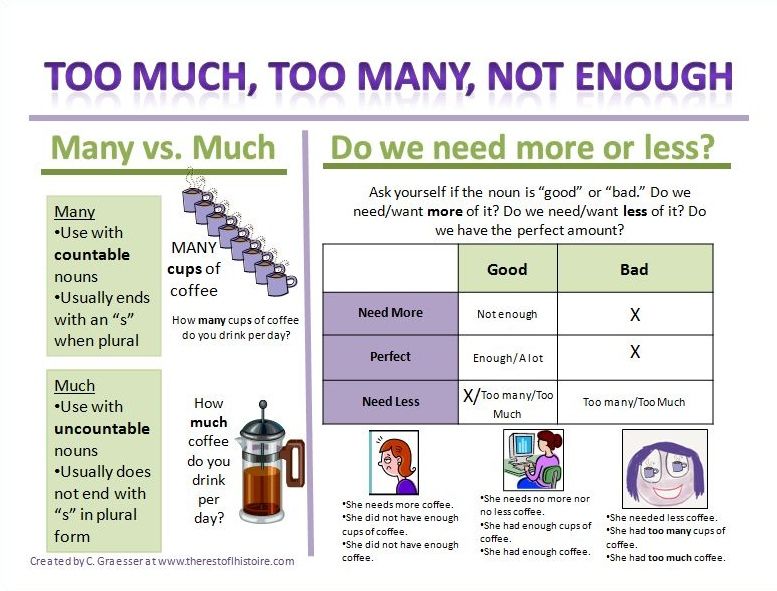Understanding high mileage and high hours on ATVs and UTVs is crucial to buying or selling a used vehicle. There isn’t an easy answer, so read this post to prepare yourself for a great purchase.
Like cars, ATVs that have been driven more miles have seen more action and have less life left in them, but ATVs and UTVs differ from cars in that you need to know the hours as well as mileage.
The ratio of miles to hours can indicate how the previous owner rode their vehicle, so you need to notice both numbers and compare them. If the ATV has high mileage but a small number of hours, they probably rode very fast and maybe recklessly. You would need to ask them about that. If the ATV has low mileage and many hours, this ATV was probably used for hauling or in tough terrain where their speed had to remain low. How bad that is depends on well the vehicle was maintained.
15 miles to 1 hours is the ideal hours to miles ratio on ATVs.
Truthfully, the most important thing you need to know is how the ATV or UTV was ridden and how it was cared for.
ATVs are intended to last 10 years or 10,000 miles. If they’re well cared for, they might last longer.
How long an ATV actually lasts varies greatly depending on the quality of the vehicle, the way it was ridden, and how it was maintained.
Some are useless after 100 hours, because they were a cheap brand and/or the owner abused or neglected the vehicle. Some can withstand harsh, truly harsh environments.
If you’re buying a used ATV, look for brand names you recognize and know are respected. This won’t answer all of your questions because someone can still run a great vehicle into the ground, but it is a crucial indicator of the original quality and expected life span of the vehicle.
Off-road are the core piece of riding gear for ATV & UTV riders
Find out the best look for you
This is the most important factor in the life of an ATV or UTV.
Previous owners have to have kept up with recommended service intervals, cleaned the ATV after every ride or weekend of riding, and made all necessary repairs.
Light trail riding, light to moderate farm use, and hunting, camping, or fishing trips fall in the light hours category. This puts little strain on the vehicle, so it will last a longer period of time.
Deep mudding, water use, higher than average speeds, rock climbing, and extreme hauling are hard hours that wear a vehicle out fast. It’s great fun while you’re doing it, but no one should expect these machines to last their full lifespan or to get top prices when they try to sell them.
Proper or improper storage impacts the life of the vehicle. It needs to have been stored indoors and protected from light, pests, and moisture. The area should also have been well-ventilated.
The area should also have been well-ventilated.
When storing the ATV, the owner should also have been mindful of fluids, tire pressure, and battery tending.
As cool as modifications are, they put a strain on the machine and decrease its lifespan. Take this into consideration when determining the price of a used ATV or deciding whether to purchase it. You should also make sure any modifications were installed correctly.
Thinking strictly of ATV mileage range and hours, 500 or fewer hours is ideal. 5,000 and up is considered high miles for ATVs and UTVs.
But don’t just go for the vehicle with the fewest miles. Consider the age of the vehicle. If someone has owned an ATV and clearly rarely ridden it, it’s unlikely that it’s in great shape after spending that much time in storage. Alternatively, it could tip you off that they’re lying.
Follow this plan.
First, ask the owner to make sure not to have the engine running when you arrive and/or notice whether it’s running when you arrive. This is a common tactic to hide that an engine doesn’t want to start.
This is a common tactic to hide that an engine doesn’t want to start.
Next, ask the owner questions about their use of the vehicle, maintenance done on the vehicle, and storage. Consider whether they seem trustworthy.
Ask to inspect the ATV or UTV, and test drive the vehicle.
No reputable seller should mind you taking any of these steps.
Once you know the hours, mileage, and the way the machine’s been cared for, think of the price. If you have the money and the ATV with fewer miles and hours seems like it’s been well cared for, go ahead and pay what seems reasonable. But don’t necessarily rule out buying a high mileage four-wheeler or one that’s done a lot of hours. A properly cared for quality brand of ATV might still be a worthwhile purchase, if it fits those criteria and you don’t spend much on it.
Consider how much is being asked and compare your budget and the likelihood of repairs or replacing it. You can get the best possible deal on a machine needs that some love by buying a salvage ATV. You can expect to probably need to invest in repairs and replacement in the future, but you won’t spend much on it so you can better afford the maintenance and repairs.
You can expect to probably need to invest in repairs and replacement in the future, but you won’t spend much on it so you can better afford the maintenance and repairs.
Routinely grease the ATV or UTV to protect it from water, dirt, mud, and more.
Clean the ATV or UTV regularly. This means you wash all mud, dirt, and bug parts off of the frame, clean the radiator, and maintain the filters.
Stick to maintenance schedules like your oil and coolant changes.
Make sure you adhere to proper storage procedures.
-20%
HIT
ENDURO Camogrey
the most durable
279 EUR
223.20 EUR
AQUAMASTER Red
reliability & comfort
677 EUR
523.70 EUR
ALL SEASON Black
62 EUR
49.60 EUR
-30%
NEW
SPEEDMASTER NEW Graphite
209 EUR
146. 30 EUR
30 EUR
Explore all
When you’re in the market for a second-hand ATV, doing your due diligence is crucial to ensure you make a good deal. One of the factors you need to consider is how many hours the ATV has run. But be aware that the hour count alone does not paint the complete picture of the vehicle’s condition.
A well-maintained and well-treated ATV from a quality brand can last 1000 hours or more. After the 1000-hour mark, there may be a need for some more significant repairs or more extensive maintenance. However, an abused or neglected ATV may last only a few hundred hours before it breaks down.
There is no one answer fits all to exactly how many hours an ATV will last, as this largely depends on how well the bike is taken care of, how it is ridden, and more. The lifespan may range from just a few hundred hours to 5000 hours or, in some cases, even more.
We’ll get more into the various factors determining an ATVs life expectancy later in this post. But to give you a general idea of what to expect, here are some guidelines on how long the bike will last in the different scenarios, ranging from one extreme to the other:
But to give you a general idea of what to expect, here are some guidelines on how long the bike will last in the different scenarios, ranging from one extreme to the other:
Related: ATV Hours vs. Miles Explained – Hours to Miles Conversion
Don’t we all know someone who somehow manages to break almost everything they get their hands on?
It doesn’t matter whether it is tools, camping gear, sports equipment, or a vehicle. After just a short while in their possession, the item starts to show clear signs of deterioration until it eventually breaks completely, long before the typical life expectancy.
After just a short while in their possession, the item starts to show clear signs of deterioration until it eventually breaks completely, long before the typical life expectancy.
This type of person typically doesn’t put too much thought into things like build quality or brand reputation when purchasing an ATV. They don’t enjoy or don’t take pride in taking good care of the things they own, or they use it way beyond what it was designed to handle.
If you fit in this category, even the highest quality ATV won’t last more than just a few hundred hours of use before it will need significant repairs or possibly a complete restoration. I’ve seen ATVs with 200 hours on the counter in a state where it makes more sense to buy a new bike rather than spending the time and money required to repair the old one.
This is the category where you’ll find most ATV owners, myself included.
These people typically use their ATVs for weekend trail-riding, hunting, or everyday work around the farm. They maintain the specified service schedule, at least for the most part, and clean the bike when it gets too dirty. They generally use the ATV like it’s supposed to be used, without taking it to the extreme.
They maintain the specified service schedule, at least for the most part, and clean the bike when it gets too dirty. They generally use the ATV like it’s supposed to be used, without taking it to the extreme.
If you fit this category, your ATV will likely last 1000 to 2000 hours before significant repairs or more extensive maintenance is required.
ATVs with this amount of hours on them typically end up getting sold to someone with the time and skill required to keep the bike going further, or it ends up being sold for parts or sent to the scrapyard.
At the far end of the scale, you have those who genuinely enjoy and take pride in keeping their gear in top shape.
These are the people who change the oil in between scheduled services just in case, never put away their ATV without cleaning it properly, and ride responsibly without pushing the bike too hard.
When things break or wear, they put in the time and effort required to get the most out of the bike rather than swapping it for a new one.
ATVs owned by people in this category are the ones that tend to last the longest. Don’t be surprised if their ATV with 1000 or even 2000 hours on the clock still looks and runs like new. Or their 25-year-old thumper with 5000 hours of runtime is still going strong.
These are the factors that matter the most regarding how long you can expect an ATV to last.
Maintenance is critical when it comes to the life expectancy of ATVs. Failing to keep up with the scheduled service intervals will drastically reduce the number of hours you get out of the bike.
ATVs have a relatively high power-to-weight ratio compared to a car or most other on-road vehicles. Small, high-output engines are typically more service-intensive than heavier engines with less power.
In addition, ATVs are often used in more challenging conditions such as rough and muddy terrain, with a lot of acceleration and braking, pulling cargo, or turning large, heavy mud wheels. These riding applications put a lot of strain and wear on the engine, drivetrain, suspension, and steering components, consequently making regular service and upkeep critical to ensure long service life.
These riding applications put a lot of strain and wear on the engine, drivetrain, suspension, and steering components, consequently making regular service and upkeep critical to ensure long service life.
Proper maintenance should include regular cleaning and re-greasing. Proper cleaning is essential after riding in the mud and before long-term storage.
Mud left sitting contains moisture that speeds up corrosion and may negatively impact plastic and rubber materials. Bushings and bearings need to be greased regularly to expel moisture that would otherwise cause corrosion, premature wear, and eventually component failure.
Related: 15 tips to prevent rust from developing on your ATV
Some ATVs live a comfortable life putting around the farm, doing light trail riding, or carrying a hunter out to his hunting cabin. These riding applications put a lot less strain on the bike and are considered “light hours. ”
”
Other ATVs are regularly put through challenges such as deep mudding, racing, rock climbing, or pulling heavy cargo in extreme conditions. On the other hand, these riding applications put a lot more strain on the bike and are considered “hard hours.”
An ATV that spends most of its days doing light hours will likely last much longer than one that does mostly hard hours. in the former category of riding
Most manufacturers keep spare parts in stock for about 15 years. After that point, getting spare parts becomes increasingly tricky as parts run out of stock.
After a while, you get to a point where the hassle of scavenging for parts becomes too tedious to be worth it.
An ATV is best stored in a dry, dark, and well-ventilated area, protected from the elements, moisture, and critters.

Related: Can You Keep an ATV Outside? What You Ought to Know
Many ATV owners modify their bikes for increased ground clearance, more power, or better performance in the mud.
A stock ATV is carefully designed and manufactured with an optimal balance between its components.
Any modification that increases performance strains other components such as the engine, transmission, drivetrain, bearings, bushings, and CV-axles. Most of these parts can be upgraded or tweaked to keep up with other performance-enhancing modifications.
As soon as you change one component, the ball begins rolling, and things may quickly become very expensive. What often happens is that people choose the upgrades that increase performance the most such as lift kits and bigger tires, but skip out on the ones required to maintain reliability.
And regardless of your efforts, you will rarely achieve the same reliability and longevity in a modified ATV as in one that’s kept stock.
Related: 26 Essential ATV mudding mods
The average ATV rider goes for recreational trail-riding every other weekend, does some light work around the farm, uses their ATV to get to their remote cabin, or plows their driveway in the winter.
This typically adds up to about 50 to 100 hours of run time each year on average.
Some use their ATV in their daily activities and may put on significantly more hours, while others barely run their bike.
A well-maintained ATV with 500 hours on the counter still has a bit of runtime left. An ATV that is run for more than 100 hours each year on average or more than 1000 hours throughout its lifetime is often considered high because it may soon need more extensive maintenance.
However, the hour count alone does not make for a precise indicator of the bike’s overall condition.
Hours of runtime should be one of the many factors you consider when in the market for a second-hand ATV. Other factors that are just as, if not more important, include:
Here are 20 questions you can ask the seller that will give you a much better idea of whether the bike you’re considering makes a good deal or not.
200 hours is generally not considered a lot for an ATV as long as it’s properly maintained, has not been involved in any accidents, and is in overall good condition. However, 200 hours in just one year is on the higher end of the scale.
However, 200 hours in just one year is on the higher end of the scale.
An ATV with 400 hours on the counter will likely begin to see some signs of wear and may need to have wearable parts such as brakes, wheel bearings, and axle joints replaced. However, if it’s followed up on maintenance and hasn’t been abused, it should still have quite a bit of life left.
An ATV engine should last the vehicle’s lifetime, which is typically 15 to 20 years or more. This applies as long as the specified maintenance schedule is fulfilled, the engine is kept stock, and not abused (improper break-in procedure used, regularly overheating, high revs when cold, etc.).
Related: How Long Do ATV Tires Last? When Should They Be Replaced?
Generally, an ATV is considered "multi-mile" when it reaches about 10,000 miles . However, more important is how it was looked after and how it was driven by the previous owner. Even with 10,000 miles on it, if the previous owner put the time and effort into caring for the ATV, there could still be a lot of life left in the car.
Even with 10,000 miles on it, if the previous owner put the time and effort into caring for the ATV, there could still be a lot of life left in the car.
Accordingly, which is better Honda or Polaris ATV? Honda is known for its reliability, ease of operation, excellent ride quality, driver comfort and agility. nine0004 Polaris is softer than glass in rough terrain. , it has great power, EBS works great, it's very comfortable to ride, and the power steering is top notch.
How many kilometers can an ATV travel on one tank of gasoline? A 5.4 gallon ATV tanker can drive 108 miles averaging 20mpg. Factors affecting gas mileage: ATV type and age, tank size, weight, throttle, terrain, tires, engine size, carburetor, and maintenance. To make sure you don't run out of gas, check your 4-wheeler before you travel and take extra gas with you. nine0007
Also, how do you convert ATV hours to miles?
Multiply the number of hours your engine has been running by 60. . Use the resulting number to estimate how many miles your engine has. For example, 1,235 hours on the engine equates to approximately 74,100 miles.
. Use the resulting number to estimate how many miles your engine has. For example, 1,235 hours on the engine equates to approximately 74,100 miles.
ATV tires typically last as little as a few hundred to 4-5000 miles and over . Their life depends on the surface you ride on, the style of the tires, the hardness and quality of the rubber, age and a number of other factors. Expect 1-2 years if you drive a lot on the roads, or 5-10 years if you stay off the roads. nine0007
Are Polaris ATVs junk? Are Polaris ATVs junk? Polaris easily competes with any other ATV manufacturer. They make good ATVs, people just like different things. This works the same for other vehicles, cars, trucks, etc. You will get soy from every brand that has its own issues, but it doesn't. they are all garbage .
Do ATVs retain their value? The cost of ATVs does not drop much over time. nine0004 after a few years their value remains unchanged . Most ATVs lose their original value 3-4 years after first use, and some models lose up to 30% of their base value, but the good thing is that after this period, their prices are mostly the same.
Why are Honda ATVs the best? Honda ATVs have earned a reputation for performance and reliability. Thanks to the explosion-proof transmission and metal gears instead of belts, this brand of ATVs can withstand heavy loads without breaking. There are The 's reliable and easy-to-use features make Honda ATVs the most popular choice among sport ATV riders.
The Ecoquad was the clear champion in fuel economy with 45.5 mpg despite spending most of its time at full throttle. The Honda followed with 32.1 mpg and the Arctic Cat diesel with 31.7 mpg, comfortably outpacing the Kymco and Polaris at 24.9.miles per gallon. The Quadzilla trailed with 18.6 mpg.
How many miles per gallon do ATVs get? How many miles per gallon can an ATV go? On average, you're looking at about 15 to 20 mpg for a new quad or one that's worn out in a couple of years. Everything will depend on how well you maintain it, and on the characteristics of the engine.
Everything will depend on how well you maintain it, and on the characteristics of the engine.
What kind of gasoline do four wheelers use?
However, most ATVs use regular 87 octane gasoline but can perform optimally with more expensive gasoline. nine0004 Petrol 91 or 89 octane. . In other words, the higher the quality of the fuel, the better your engine will perform. In addition, some four-wheelers only use premium fuel.
Is 5000 hours too much? As a general rule, up to 2,500 hours is a well-run number, while 35,000-5000 hours is considered a high .
How many hours will the truck engine run? You are reducing the speed of the engine compared to driving on the wrong path because it is running at half its maximum speed. In comparison, it should probably have 3500 to 4000 hours of battery life. .
How many miles does it take to drive 2 hours?
How many hours is 2 miles?
| miles | Relaxed pace | Normal pace |
|---|---|---|
| 2 miles | 40 minutes | 30 minutes |
| 3 miles | 1 hour | 45 minutes |
| 4 miles | 1 hour, 20 minutes | 1 hour |
| 5 miles | 1 hour, 40 minutes | 1 hour, 15 minutes |
Nov 27 2021
See also
Should ATV tires spin? Multi-directional tread pattern for better grip on rocks. Multi-directional tires can be turned for even tire wear. nine0005 . Multi-directional tread pattern better grips side slopes. Multi-directional tires usually stop faster than directional tires.
How often should I change the oil in my 4 Wheeler? In general, you should perform an oil change on an ATV. approximately every 100 hours of use or at least once a year .
ATV recommended normal tire pressure: 4 to 8 psi (psi).
Polaris made in China? Are Polaris parts made in China? Engines are still built in Osceola, Wisconsin. And also many parts are made in china . Just like the rest of the big names.
What should I look for in an ATV?
Who makes the motors for Polaris? All 2015 Polaris ORV lineup (Ranger, RZR, Sportsman and ACE) now equipped with ProStar 9 engines0005 . In the past, Polaris has partnered with other manufacturers (one of them was Robin/Fuji Industries) to supply engines for their ATVs and UTVs.
In the past, Polaris has partnered with other manufacturers (one of them was Robin/Fuji Industries) to supply engines for their ATVs and UTVs.
Electric ATVs are rapidly gaining popularity due to their economy and environmental friendliness. But many riders still do not know how to charge an ATV on a battery. Improper charging reduces the battery life or the battery loses its capacity quickly. Therefore, let's figure out how to charge a children's ATV and consider the key recommendations of experts. nine0007
There are two ways to charge your ATV battery. The first and easiest is to connect the charger to the appropriate connector. All electric cars and scooters are charged in a similar way, although not all quadrics have a similar socket.
If the ATV does not have a charging port, the rider will have to connect the battery directly to the charging station. To do this, you need:
To do this, you need:
It is important to note that lithium batteries have a charge level control board. This means that after a full charge, the process stops. Although overcharging the battery is still not recommended. nine0007
Another important question many riders are wondering is how to charge an ATV battery with an in-car device. Yes, such a procedure is possible, but you need to properly configure the charger. For recharging, you can only use devices with adjustable charging current and the ability to set its minimum level (0.5-0.7 A).
Important : The optimal current for battery charging is 1/10 of the battery capacity (in Amps).
The instructions for each ATV indicate the optimum battery charging time. On average, this figure is 6-12 hours. The charging time depends on the generation of the battery, its capacity and the characteristics of the charger. Don't forget to charge the battery, though. If the battery has 30-40% capacity left, the recharging time should be reduced.
But what if you don't know how long to charge your ATV battery? In this case, you need to almost completely discharge the battery and charge it for 8 hours. After that, the battery should be installed on the quadric, and the charge level should be assessed. If the indicator shows 100%, next time you need to charge the battery for 6-7 hours. In this way, you can determine the optimal recharging time. nine0007
Also remember that overcharging is the main enemy of batteries. It is strongly not recommended to leave the battery connected to the network for 15-20 hours. This leads to a decrease in battery capacity and, accordingly, a decrease in the operating time of the quadric.
This leads to a decrease in battery capacity and, accordingly, a decrease in the operating time of the quadric.
Knowing how long it takes to charge an ATV, you can make a schedule for recharging it. For example, the battery can be connected to the network in the evening or after each trip. You can also purchase a replacement battery, thereby increasing the riding time on the ATV. nine0007
The battery of any electrical equipment must be properly maintained. Violation of the recommendations may lead to a decrease in battery capacity or damage to it. To avoid such problems, it is recommended:

Separately, it is worth mentioning the "buildup" of the battery. Immediately after purchasing the equipment, you will need to fully charge and charge the ATV several times (2-3 times).
Most riders store their bikes before winter. And in order for the device to be ready for operation in the spring, it must be properly preserved. Preparing an electric quad bike for wintering is quite simple, you just need to find a warm and dry place to store the quad.
Another important conservation point is battery preparation. Before wintering you need:
